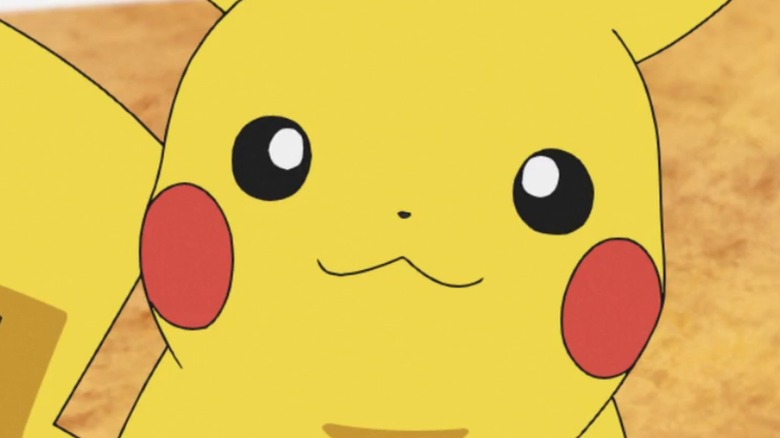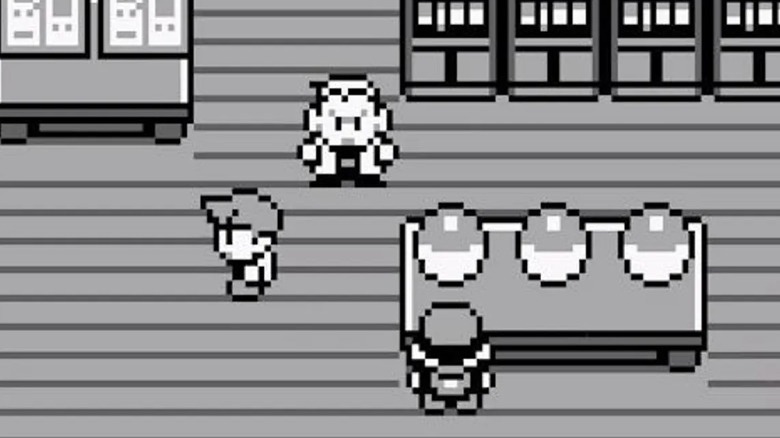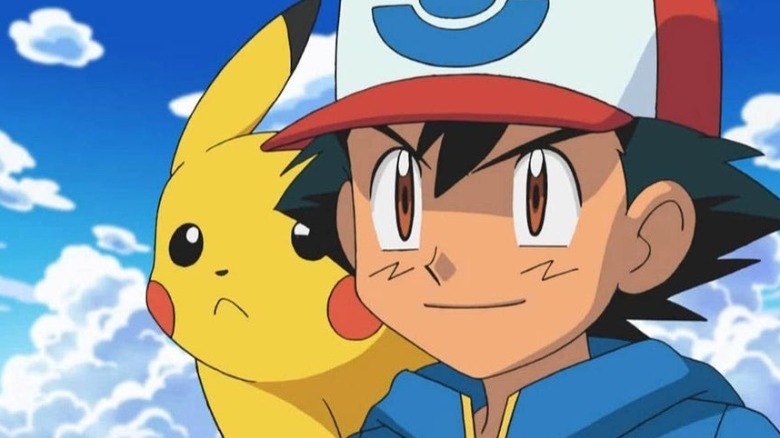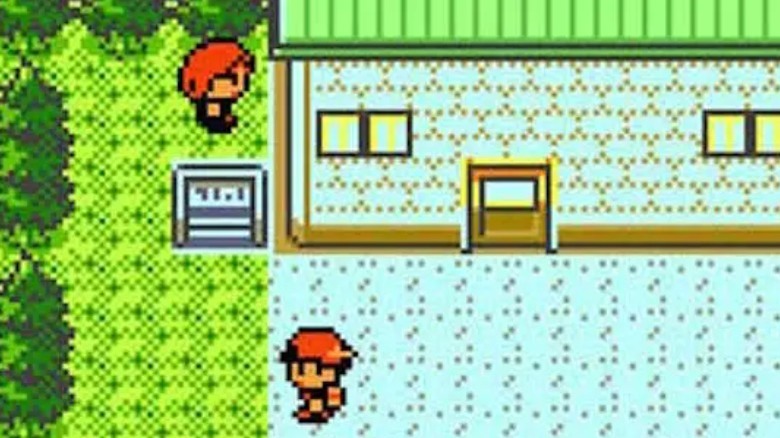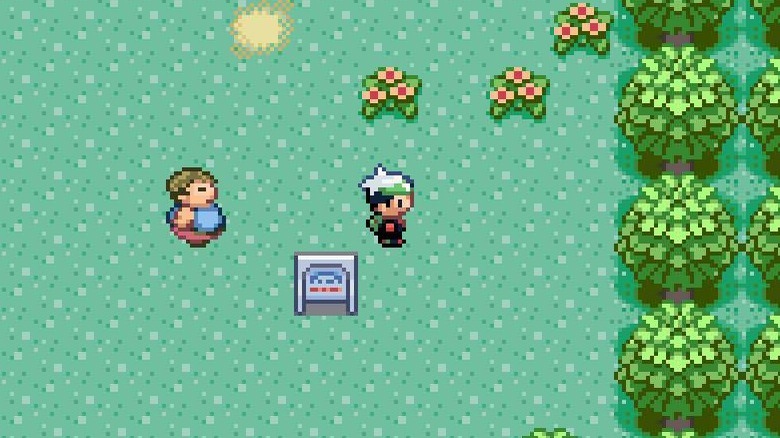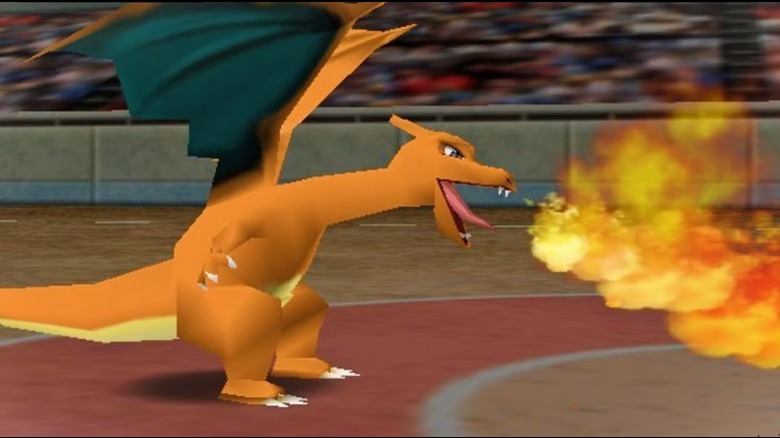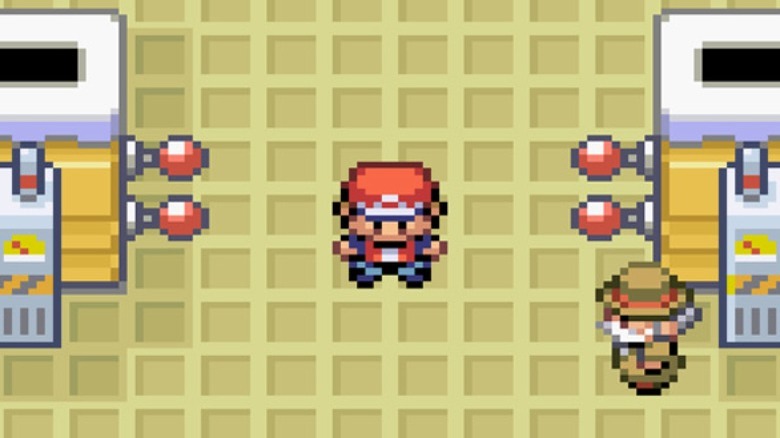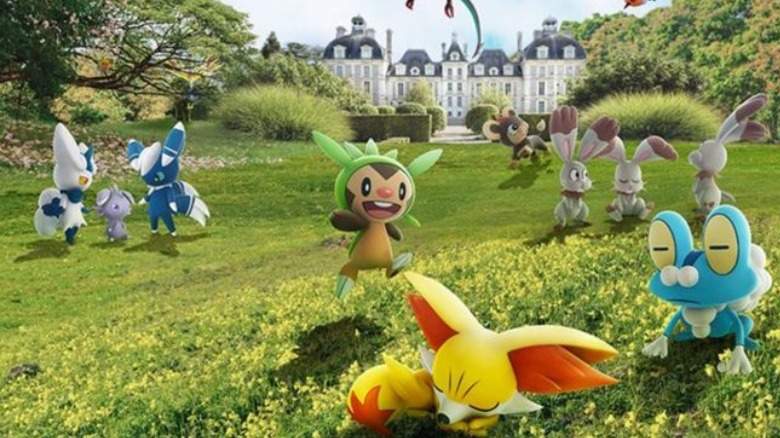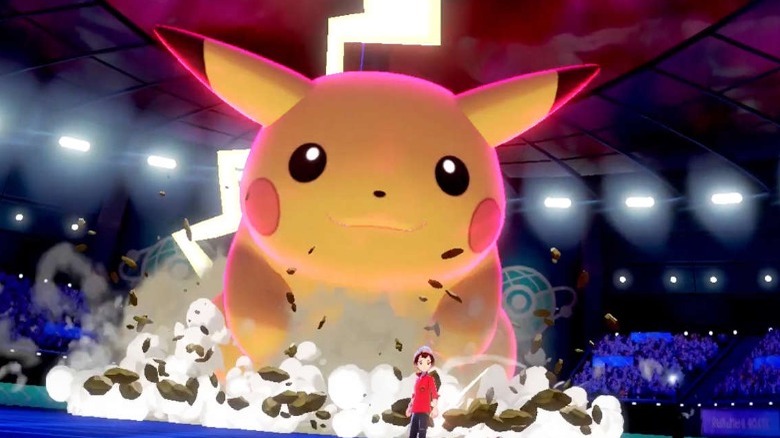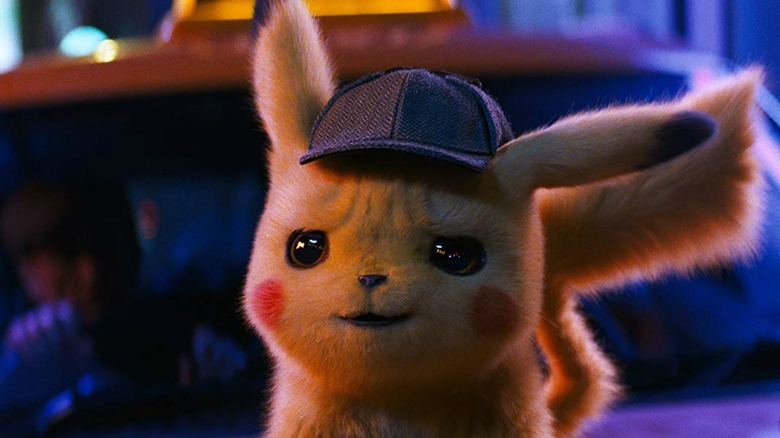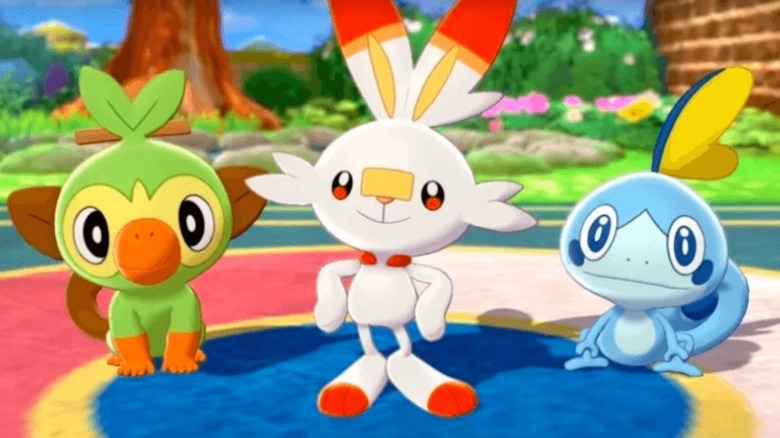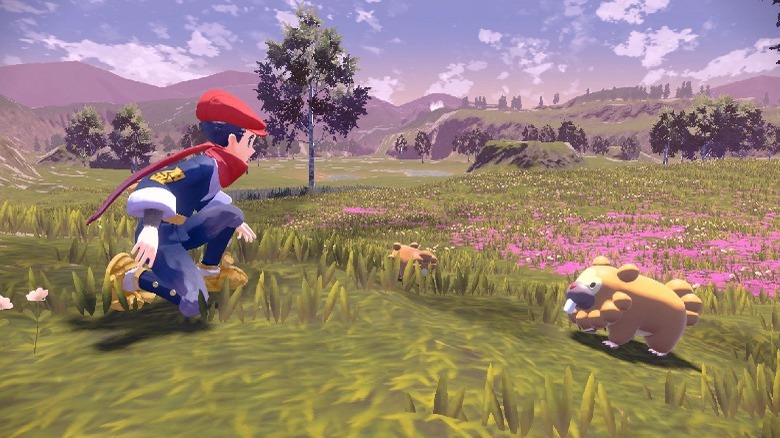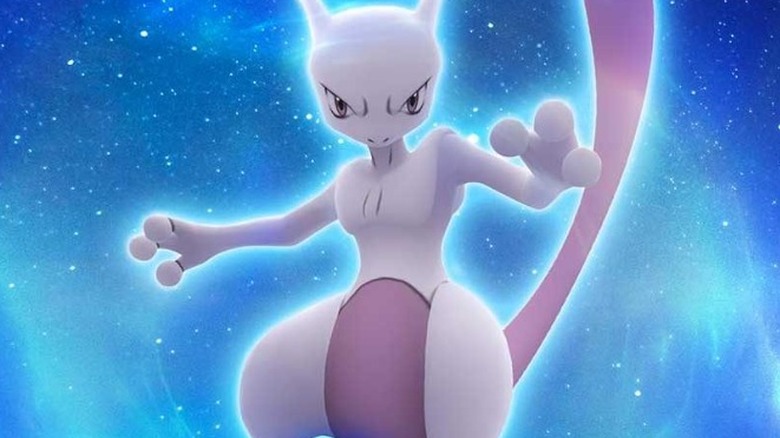The Stunning Transformation Of Pokemon
2021 saw the world celebrate the 25th anniversary of the "Pokémon" franchise. What started as a Game Boy role-playing game has expanded into one of the world's biggest entertainment properties. In fact, The Pokémon Company has confirmed that the series has sold more than 440 million units in total. That makes it the third best-selling video game franchise of all time, just behind "Mario" and "Tetris" in terms of popularity.
Considering just how long "Pokémon" has been around, it shouldn't come as much of a surprise that the series has changed so much throughout the last quarter of a decade. From monochrome 8-bit graphics and sprites, to live-action television and movie adaptations as well as cutting-edge video games. Add in a long-running anime show, a wildly successful trading card game, and a multitude of toys and merchandise, and the world of "Pokémon" is very different from what players first got to see in 1996.
Here's a history of "Pokémon" and how it has changed throughout the years to become one of the most familiar gaming franchises across the globe.
The series makes its debut in 1996 with Red & Green
Despite the fact that Western audiences wouldn't see "Pokémon" games until 1999, the series actually had its origins three years earlier. "Pocket Monsters: Red" and "Pocket Monsters: Green" launched in Japan in 1996. The two games were inspired by Satoshi Tajiri's love of bug collecting as a child, as well as various JRPGs that were popular at the time (via Amped News). Released on the Game Boy, the games were played from a top-down perspective and didn't feature particularly impressive visuals or even color sprites due to the technical limitations of the Game Boy.
Following the journey of a young child across the Kanto region as they collect Pokémon, battle other trainers, and win gym badges, the games were an instant hit (via Nintendo Life). However, it was the multiplayer features — such as the ability to trade and battle other players using the Game Link Cable — that really set it apart and helped "Pokémon Red and Blue" stand out. The series' success in Japan prompted Nintendo to put in place a huge marketing campaign, a strategy that worked well with both titles leading the sales charts for the year (via IGN).
Many of the most powerful Pokémon were introduced in this era, and the likes of Pikachu, Charizard, Squirtle, and Mewtwo have become household names around the world. But that was almost not the case, with some Nintendo executives feeling that the artwork for the creatures would need to be made less cute to appeal to players in the United States (via Kotaku). Fortunately, the designs were kept the same, giving a uniform look for Pokémon across the world.
The anime beings airing in Japan
The huge success of "Pokémon Red & Green" in Japan meant that Nintendo and Game Freak were keen to develop the series into a franchise. The end result of that is that "Pokémon" as an entity soon began to look very different from what players had experienced in the original games. The "Pokémon Trading Card Game" was first published in Japan in 1996 before coming to the US and the rest of the world in 1998 (via BBC). It gave fans the opportunity to see proper colored versions of their favorite Pokémon. However, it was the anime series that really gave the series a new look.
Hitting television screens in Japan in 1997, the television show featured 10-year-old Ash Ketchum setting off on an adventure to become a Pokémon master. 25 years later, the anime is still going strong with dozens of standalone movies and more than 1,200 episodes. It continues to find new audiences to this day on streaming services such as Netflix (via CNBC). As one of the most successful video game adaptations of all time, it has helped cement the popularity of the franchise and given fans a different perspective on the world of "Pokémon" as it explores new characters and locations not seen in the games.
1999 saw the original 151 Pokémon expanded with the release of Gold & Silver
In many ways, "Pokémon Gold and Silver" were a continuation of the previous games and even featured a connected story. This time around, the action takes place in Johto, with a new trainer going on an adventure after speaking with Professor Elm. After collecting all of the gym badges in the region and defeating the Elite Four, the player can then go back to Kanto and battle against a stronger collection of Gym Leaders before taking on Red, who acts as the protagonist from "Pokémon Red and Blue."
While the gameplay and general feel of the sequels were largely unchanged, "Pokémon Gold and Silver" did introduce some innovations. Chief among them was the inclusion of 100 new Pokémon, including the likes of Ho-oh and Lugia, with two new types (via IGN). The titles also had an internal clock feature, changing the time of day in-game and the appearance and location of certain Pokémon. Meanwhile, the fact it was designed for the Game Boy Color gave it the ability to have a more vivid palette — a major step forward from the monochrome visuals of the original games.
Pokémon Ruby & Sapphire saw a move away from Kanto and the original story
This is where the visuals in the mainline "Pokémon" games took their first major leap forward. With the extra processing power of the Game Boy Advance, Game Freak was able to upgrade to 16-bit graphics, giving the world and the creatures within it more detail than ever before. However, this was still below the capabilities of the handheld console and a far cry from the kind of visuals other games had to offer (via IGN).
As you'd expect, the formula in these 2002 releases wasn't drastically different to what had come before. These games launched double battles, allowing four trainers to be involved in a battle at the same time—a mechanic that also worked in multiplayer battles. Some 134 new Pokémon were introduced and the game included added features such as innate abilities and natures that could change how the creatures behaved.
"Pokémon Ruby and Sapphire" were also a deliberate step away from the previous games. The interconnected story of Red and the presence of the Kanto region was gone, replaced with the land of Hoenn. Players weren't even able to import their Pokémon from the older generations into the new title. Yet, it was a necessary step to ensure that the series didn't stagnate, according to Den of Geek.
Pokémon Stadium gives fans the chance to experience the creatures in more detail
"Pokémon Stadium" was the first time that players got to experience these fantastic creatures in full 3D in a video game. Before that, players had been limited to sprites and 8-bit graphics, while this game had a look that was much more like the anime series. Released on the Nintendo 64 in 1999 in Japan and 2000 in North America, it pitted users against a wide array of different trainers in increasingly difficult battles. There were no RPG elements, with the action fully focused on the combat—although the actual battles were essentially the same as in the mainline releases and used the original 151 Pokémon (via Nintendo).
In a first for the series, "Pokémon Stadium" gave players the opportunity to play "Pokémon Red and Blue" on television screens through the use of the Transfer Pak. Pokémon from the Game Boy titles could also be imported to use in the Nintendo 64 game, letting you see your own captures in full 3D. Nintendo even included a variety of mini-games that up to four players could take part in.
Remakes of older games begin to show up
A tradition of improving the original release started way back in 1998, when Game Freak released "Pokémon Yellow." Taking inspiration from the anime, this version of the game had a Pikachu that would follow the player character and figures from the TV show, such as Team Rocket's Jessie and James. However, Nintendo and Game Freak took things further in 2004 with the launch of "Pokémon FireRed and LeafGreen." These Game Boy Advance remakes of the two initial games effectively modernized the original titles and brought them into line with "Pokémon Ruby and Sapphire" (via Game Informer).
This started a tradition of updating older games from the series, giving them a visual makeover and including quality-of-life enhancements that are present in more recent titles. For example, "Pokémon FireRed and LeafGreen" feature 16-bit graphics and full-color visuals that were not previously available. Game Freak has since used the same formula for "Pokémon HeartGold and SoulSilver," "Pokémon Omega Ruby and Alpha Sapphire," and most recently "Pokémon Brilliant Diamond and Shining Pearl."
A move to 3D environments and models
Following the release of "Pokémon Ruby and Sapphire," the visuals in "Pokémon" games saw a rapid improvement. "Pokémon Diamond and Pearl" brought 32-bit graphics to the series and started to introduce 3D environments. To coincide with the more powerful hardware, the series saw an increase in detail, with extra vivid colors, and higher resolutions than were previously seen. This continued into "Pokémon Black and White," which included battle animations so the sprites actually appeared to move.
Where the big step came, though, was the launch of "Pokémon X and Y" in 2013. The Nintendo 3DS games were the first to ditch sprites entirely and instead switch to full 3D models and environments. Sites like Eurogamer praised the move, arguing that it made the Pokémon more appealing and lifelike. With the visual changes came the chance to experiment further with gameplay modifications, allowing mechanics such as Mega Evolutions to be portrayed in an impressive way that wouldn't otherwise have worked as well (via IGN).
Pokémon Go brought the franchise to the real world
Perhaps the biggest moment in the history of the "Pokémon" series in the last decade came with the release of "Pokémon Go" in 2016. Developed by Niantic, it is an augmented reality game for smartphones that became a worldwide phenomenon and part of the public consciousness around the world (via Business Insider). Users could play the game while going about their daily lives, encountering virtual Pokémon in the real world via augmented reality software. Like the mainline series, the goal was to collect, level up, and battle with the creatures in a more interactive way than had ever been possible.
While the visuals of the Pokémon themselves were not all that more impressive than what was available in the likes of "Pokémon Sun and Moon," what really helped "Pokémon Go" be distinctive was the way the creatures effectively appear in the world around players. Still popular to this day, "Pokémon Go" no doubt inspired many people to get outside and play the game while taking in their surroundings in a way that few other games ever had.
New ways of battling were introduced
Battling in "Pokémon" games, especially the mainline series, has remained largely unchanged throughout the history of the series. Using a turn-based system, players can use a variety of moves to attack opponents, cause status effects, and boost or damage certain traits. Although there have been a few modifications, wholesale changes was something that the franchise avoided for the most part.
Things began to change in 2013 with the release of "Pokémon X and Y." These games introduced Mega Evolution, a way to increase the size and form of various creatures—including Charizard, Mewtwo, Blastoise, and Lucario—if they are holding special Mega Stones (via Polygon). This gives these Pokémon increased stats and new abilities.
Meanwhile, both "Pokémon Sword and Shield" and "Pokémon Sun and Moon" included extra battle mechanics. The 2016 games brought Z-Moves, powerful attacks that can only be used once in a battle but can have devastating effects. According to Eurogamer, "Pokémon Sword and Shield" allow players to use an ability known as Dynamaxing and Gigantamaxing, both of which cause Pokémon to grow in size and use special new moves to gain an advantage.
Gyms have been shaken up
One of the most common and unchanged mechanics in the "Pokémon" series has been gym battles. In order to reach the Elite Four and complete a game, players would generally have to battle eight Gym Leaders in their gyms and collect their badges. These badges essentially acted as a visual representation of your progress through the story and as a trainer.
However, some recent titles have experimented with the formula to offer fresh experiences and switch up the predictable nature that fans are used to. A good example of this is in "Pokémon Sword and Shield," where players have to take part in gym missions before battling the Gym Leader. According to Heavy, these can range from shepherding Wooloos to solving intricate puzzles.
In a more dramatic shift, "Pokémon Sun and Moon" ditched gyms entirely, with players taking part in trials instead (via Twinfinite). These involve battling a Trial Captain and then completing a set of objectives for them, which include doing things like collecting special items or proving your knowledge of Alola and Pokémon. This is a similar system that was used in "Pokémon Legends: Arceus."
The live-action Detective Pikachu launches in cinemas
Although there have been several cinematic releases based on the "Pokémon" franchise, the 2019 mystery film "Detective Pikachu" set a new standard. That's because it was a full live-action movie rather than an animated film. Featuring a cast made up of Ryan Reynolds, Justice Smith, Bill Nighy, and Kathryn Newton, it marked the first time that Pokémon have appeared in a properly realistic manner as if they were authentic creatures living in the world.
Based on the adventure game of the same name, it focused on a talking Pikachu who works with a human partner to solve the mysterious disappearance of a police officer. According to Vulture, the film took almost a decade to get made, with executives at The Pokémon Company initially unwilling to commit to a live-action adaptation. Critics at outlets such as Forbes expressed the view that it was the best video game movie ever made and the design of the Pokémon themselves was widely praised.
The mainline series finally comes to home consoles and gets DLC
Throughout its history, the "Pokémon" series has mostly been associated with handheld portable consoles like the Game Boy and Nintendo DC. In fact, none of the mainline games had ever come to a home console despite the constant requests from fans. Titles such as "Pokémon Stadium" and "Pokémon Colosseum" did come to systems like the Nintendo 64 and the GameCube but they were not the typical role-playing games fans are more familiar with.
With the release of the Nintendo Switch, though, that precedent was thrown out. After all, the latest Nintendo console is a hybrid system that can be connected to a television as a traditional console or used as a portable device. That meant that for the first time ever, players could experience mainline games on a big screen. The first games to do that were "Pokémon: Let's Go, Pikachu! and Let's Go, Eevee!" in 2018, quickly followed by "Pokémon Sword and Shield" a year later. The latter of those also became the first "Pokémon" game to get DLC following the launch of "The Crown Tundra" and "The Isle of Armor."
Pokémon Legends: Arceus introduces a new type of Pokémon game
The most recent "Pokémon" game is the 2022 Nintendo Switch title "Pokémon Legends: Arceus." Developed by Game Freak like the other mainline games, it is a very different experience to the other games in the series, for a multitude of reasons. Chief among them is the fact that this is a game set far earlier than any of the others as it acts as a prequel to "Pokémon Diamond and Pearl."
A somewhat open-world game according to Den of Geek, it has a deeper emphasis on exploration and discovery than its predecessors. It also significantly changed the way that Pokémon are captured, with players able to throw Pokéballs without battling a creature first to weaken it. These Pokémon can also directly attack the user and there are special boss battles with particularly strong Pokémon that don't use the traditional turn-based combat system.
Taking place in an ancient era of the Sinnoh region, there are fewer buildings and evidence of civilization, with the majority of locations being wilder. With upgraded graphics, new gameplay mechanics, and a distinctive setting, "Pokémon Legends: Arceus" is a true formula shakeup for the series that was praised by the likes of The Verge for the fresh changes.
There are now a total of 921 Pokémon to catch
"Pokémon" started with just 151 species in total, with "Pokémon Red and Blue" including the creatures that the vast majority of fans are most familiar with. This includes the likes of the original starters—Bulbasaur, Squirtle, and Charmander—as well as Pikachu, Mewtwo, Snorlax, Onix, and Voltorb. But with each subsequent generation of games, the total number of Pokémon has increased at a rather steady rate.
For example, "Pokémon Gold and Silver" added an additional 100 Pokemon, while "Pokémon Black and White" and "Pokémon Sun and Moon" expanded the Pokédex by 231 species. Meanwhile, the most recent titles, "Pokémon Sword and Shield" and "Pokémon Legends: Arceus," have seen the addition of 88 new Pokémon. Across all the mainline games, and including all variants, there are 921 Pokémon available now (via Game Revolution)—making it a much more difficult task for those who want to catch 'em all.

